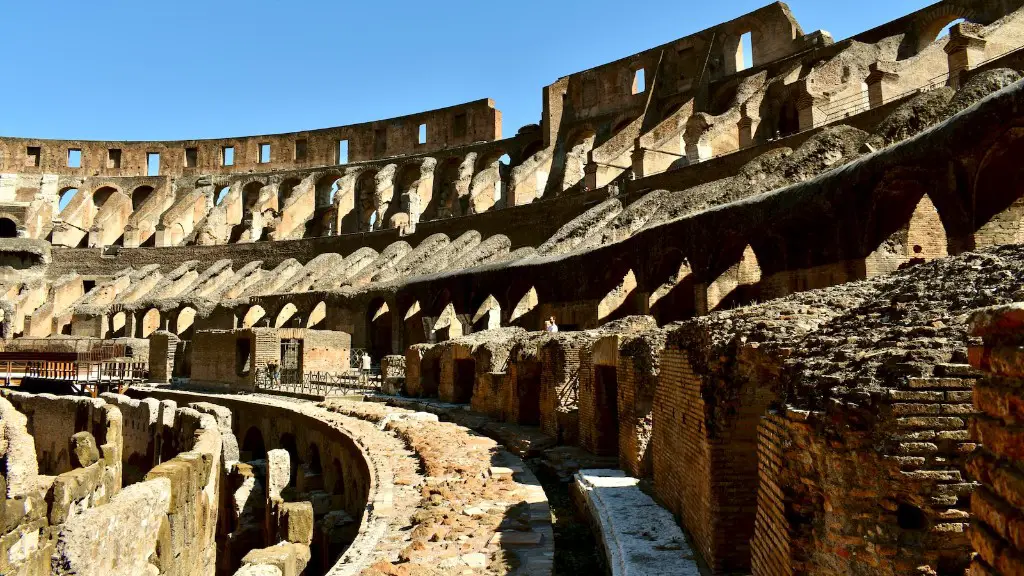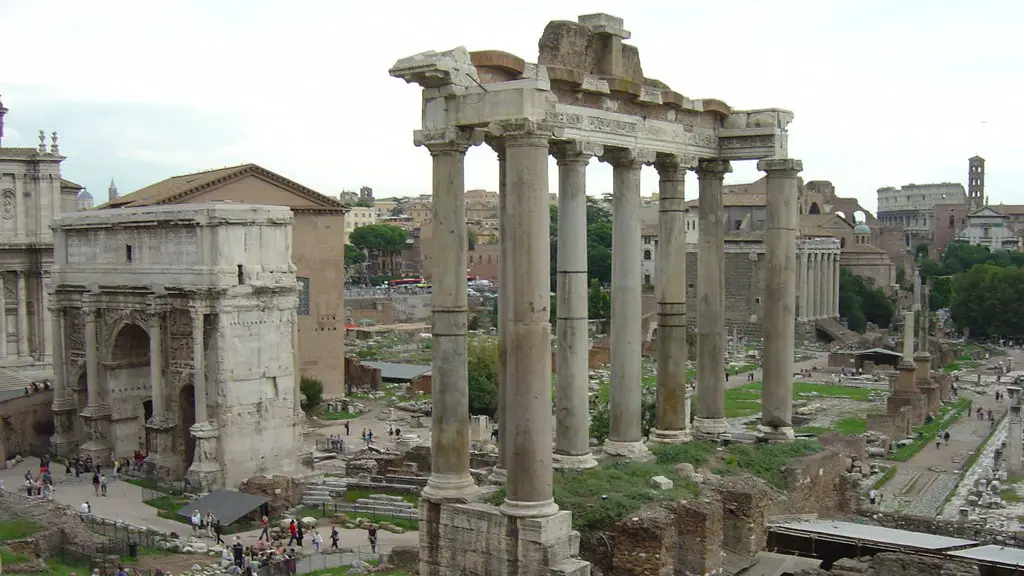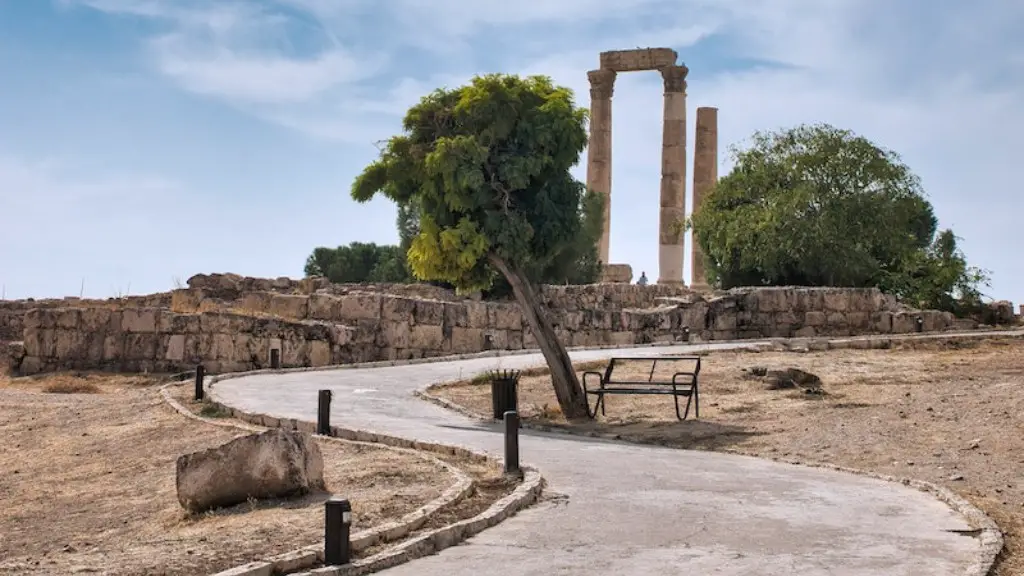Appearance and Design
Aqueducts are an engineering marvel belonging to the ancient Roman era. Built of arches and lined with stone, these structures were designed to transport water all the way from their source to the cities and into the baths, fountains, and private homes. Aqueducts were an ingenious solution, helping to quench the thirst of a large population. The importance of aqueducts to the ancient Romans was immense and they played a major role in their development as a civilization.
The most obvious function of aqueducts was to supply water to the cities, but their importance also extended to the prosperity and longevity of the Roman Empire as a whole. Roman aqueducts were amongst the most advanced engineering feats of the time, and they allowed the Romans to take advantage of the water resources in their neighboring territories. Aqueducts made it easy to transport and store water, extending the reach of Rome.
These impressive feats of engineering could reach up to 60 miles in length, with a single aqueduct often encompassing multiple rivers, canals and hills. Simply put, aqueducts were the veins that distributed water throughout the Roman Empire. These intricate structures were used to carry clean water to the cities and provinces from nearby sources, traveling through natural ravines and specially constructed channels.
To make use of the available water resources, the Roman engineers created a complex network of aqueducts that allowed for a constant pressure and even distribution of water. This was achieved by carefully calculating the decline in the pressure so that the flow would remain even, prevent contamination, and ultimately be most effective. By constructing the aqueducts underground and in some cases above ground, the Romans managed to build a system that could transport water over long distances while maintaining a constant pressure.
Not only did these sophisticated constructions solve the problem of water scarcity, but they also provided Roman citizens with access to one of the most important necessities, clean drinking water. Aqueducts allowed the Romans to undertake large-scale public works projects such as constructing baths, fountains and public reservoirs. This, in turn, provided more employment opportunities, and allowed for the growth of cities. In addition, by providing the people with clean drinking water, the Romans could lay the foundation for the development of their civilization.
Environmental Impact
Aqueducts were also designed with the intention of minimizing or eliminating pollution. Most aqueducts were underground, which allowed for clean water to travel for long distances without it being exposed to the natural environment. This allowed the Romans to reduce their reliance on rivers, which were often contaminated by runoff from farms and factories. Aqueducts were also constructed to transport clean water to areas where there were no rivers or nearby sources of water.
The implementation of this technology also allowed the Romans to preserve rivers and preserve wildlife. This was especially important during the Caligula period when rivers were at risk due to the introduction of heavy farming and industrial development. Aqueducts made it possible for Romans to transport water from far away, and this helped to avoid the destruction of local natural resources.
Not only did aqueducts provide an effective means of water transport and preservation, but they also facilitated the development of cities. By providing an accessible and reliable supply of water, the aqueducts allowed Roman citizens and tradesmen to thrive. Moreover, aqueducts offered a convenient way of cleaning and disposing of wastewater. This helped to reduce the incidence of diseases that were caused by contaminated water supplies, and this was a major factor in the expansion of the Roman Empire.
Conclusion and Legacy
Aqueducts were a crucial component of the Ancient Roman civilization and they played a major role in their development. The aqueducts enabled the Romans to take advantage of their water resources in nearby territories, and this allowed them to transport and store water. In addition, these impressive structures provided clean water to the cities, enabled the development of public works projects, and enabled the advancement of Roman civilization. Furthermore, the aqueducts also helped to reduce or eliminate pollution in rivers, and this helped to preserve wildlife and prevent the destruction of natural resources.
Economic Benefits
The economic benefits brought about by Roman aqueducts were immense. Aqueducts enabled the efficient distribution of water, and this allowed for the public works projects to be undertaken. This, in turn, provided more employment opportunities, and allowed for the growth of cities. By providing the people with clean drinking water, these aqueducts helped to stimulate the economy and lead to the development of Roman civilization.
In addition, the presence of aqueducts made it easier to transport raw materials and goods. This further stimulated the economy, as it enabled more efficient trade and commerce. For instance, the Romans were able to move large quantities of goods and resources quickly across different territories, increasing the efficiency of their infrastructural network. Moreover, the presence of aqueducts also provided them with a source of revenue, as citizens were charged for the use of the water.
All in all, the presence of aqueducts benefited the economy in numerous ways and played a major role in the development of the Ancient Roman civilization.
Military Applications
The Romans were also able to use their aqueducts for military purposes. Aqueducts allowed for the transportation of large forces and equipment through enemy territory, as the water systems could provide cover for the troops. Aqueducts also enabled the Romans to construct large water reservoirs, which could be used to effectively irrigate fields and sustain large armies. This allowed the Roman armies to quickly move across different areas and consequently expand their territories.
Moreover, the advanced engineering of the Roman aqueducts also played a major role in the defense of the Roman Empire. Aqueducts could be easily blocked or collapsed, making it difficult for the enemy to traverse through them. This allowed the Roman forces to protect the strategic points and secure important locations much easily.
Ultimately, the use of aqueducts for military purposes allowed the Roman Empire to flourish and remain secure for centuries. The Romans were able to successfully utilize these ancient engineering feats for defense, transportation, and provision of water.
Intrigue and Timeframe
The construction of aqueducts began during the third century BC, and this technology was crucial for the development of the Roman civilization. Aqueducts marked the beginning of Rome’s glory days, and they played a major role in the growth of Roman civilization. With the help of aqueducts, the Romans were able to reach their imperial peak by the second century AD.
The Roman aqueducts are often considered an extraordinary feat of engineering, and the Romans had to overcome numerous difficulties to build them. Technologically advanced engineering expertise was needed to map out the aqueduct systems and build them in the most effective and efficient method, and this intrigued numerous Roman engineers over the years.
In addition, the construction of aqueducts has also been one of the most mysterious parts of Ancient Roman history. Legends of hidden tunnels, underground passageways and intricate engineering are often linked to the aqueducts and this has created a sense of intrigue surrounding them. Thus, the mystery of the Roman aqueducts is still alive and is part of the Roman legacy that has survived for centuries.
Ethical and Political Impact
Aqueducts played a major role in the ethical and political development of the Roman Empire. The availability of clean water allowed the Romans to provide their people with a healthy lifestyle, which in turn enabled them to have access to sanitation facilities and higher standards of health. This was especially important during the times of the early Roman Empire, when access to clean water was scarce.
Moreover, the presence of aqueducts also allowed for the advancement of public works projects and public facilities. The construction of baths, fountains and public reservoirs provided Roman citizens and tradespeople with better facilities, which enabled them to go about their everyday life with ease. This also had a positive impact on Roman politics, as it allowed them to take control of various public works projects.
In addition, the presence of aqueducts allowed the Roman citizens to have access to clean water, and this enabled them to have more spare time to engage in other activities. Aqueducts allowed for the avoidance of diseases that are associated with contaminated water supplies, and this further contributed to the political and ethical development of the Roman Empire.
Power and Legacy
Regardless of their political, environmental, and economic contributions, the Roman aqueducts are often thought to embody the power of the Roman Empire. The aqueducts gave the Romans a sense of identity and superiority, and their accomplishments were held in high regard by later civilizations. This awe-inspiring technology served as a symbol of the ambition and power of the Roman Empire.
In the modern world, the Roman aqueducts symbolize the glory and might of the Ancient Roman civilization. They have inspired countless architects and engineers over the centuries, and Roman aqueducts still serve as a source of inspiration in architecture and engineering. Furthermore, the aqueducts still remain some of the most impressive feats of engineering of the Roman period, and this serves to remind us of the achievements of the Roman civilization.
The Roman aqueducts are a lasting reminder of the technological and engineering prowess of the Ancient Romans. They provided the Romans with an efficient way of transportation, allowed them to expand their territories, and provided them with a reliable source of water. In sum, the importance of aqueducts to the ancient Romans cannot be understated, and their legacy still lives on to this day.





